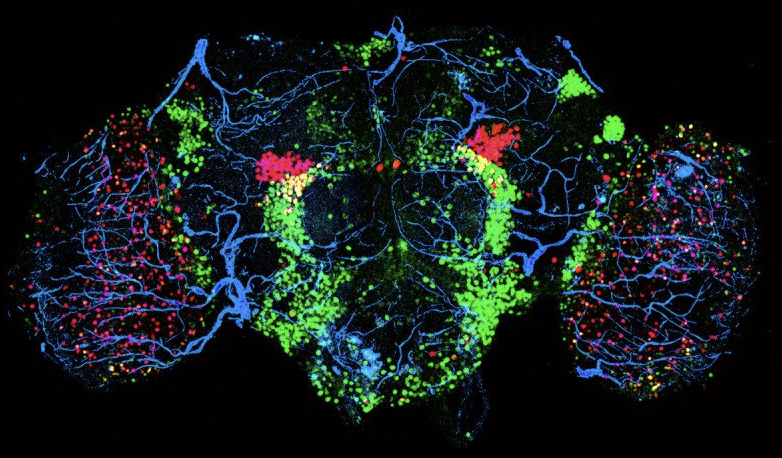What are emotions? Neuroscientific research on animals may finally settle the debate

- Despite decades of research on the topic, many mysteries remain about what emotions are and how humans and other animals experience them.
- Part of the problem is that scientists conceptualize and study emotion in many different ways, depending on their particular discipline.
- In The Nature of the Beast: How Emotions Guide Us, neurobiologist David J. Anderson explores how the human brain regulates emotion, as well as what neuroscience reveals about the internal states of animals.
Excerpted from The Nature of the Beast: How Emotions Guide Us by David J. Anderson. Copyright © 2022. Available from Basic Books, an imprint of Hachette Book Group, Inc.
A child pummels a classmate in a schoolyard. Insults traded in a tavern escalate into a bar fight. Two rams butt horns on a mountain precipice. A pride of lionesses takes down a Cape buffalo. A malevolent mob storms the Capitol. A mass shooter slaughters scores of concertgoers from a hotel window.
All these examples are naked acts of aggression. They are overt behaviors that can be recognized and recorded in words or on video. However, at least in the case of humans, they are also accompanied by something we cannot see: an internal, subjective experience of emotion by the person committing the act. Witness any of the above situations, and you might assume that the assailants feel anger, rage, fury. But unless they specifically tell us how they feel, how can we ever really know what emotion they are experiencing—or, indeed, if they are experiencing any emotion at all? And what about the experience of animals, whom we cannot even ask?
Clearly, there is some connection between aggressive behavior and things like anger and rage. It is difficult to imagine being driven to commit such violent acts without an underlying emotional drive. Yet our intuition and experience tell us that anger and aggression are not the same thing. After all, one can certainly feel angry without physically expressing that feeling as aggression. Is anger generated separately and independently from aggressive behavior in the brain, or are they different manifestations of the same process? Does anger cause aggression, does aggression cause anger, or is there no causal relationship between the two? Ultimately, these questions can only be attended to after we’ve answered a more fundamental one: What exactly are emotions, and what do they do for us?
The problem is that, despite centuries of inquiry on the topic, we don’t know. Not only that, but scientists cannot even agree on what an answer should look like. There are easily half a dozen different perspectives people bring to the study of emotion: psychological, cognitive, sociological, anthropological, philosophical, and neuroscientific. Researchers in these disciplines don’t speak the same language or understand things in the same terms. A psychologist seeks to explain emotions in terms of human drives, needs, and conflicts. A neuroscientist seeks to explain them in terms of patterns of brain activity. Some people want to explain a particular emotion, like sadness or fear; others want to understand in a general way what makes emotion different from other kinds of brain processes. Not only are we the proverbial blind men grasping different parts of the elephant and trying to describe what we are holding, but we don’t even have the same word for “elephant.”
Given this intellectual diversity and lack of consensus, it is not surprising that there have been many books espousing new theories of emotion. Most of them—certainly most of the theories that make their way into the public conversation—originate in psychology. Such theories are interesting and powerful, but they are often very abstract and hard to falsify by experiment. The perspective of this book is very different. I believe that neuroscience can offer us a way of thinking about emotions that is objective and empirical, and that gives us the tools to begin studying questions about emotion that have been so difficult that some have written them off as unsolvable.
But first, a little background. Neuroscientists study diverse animal species, including humans, to understand how the neurons and circuits within their brains give rise to internal drives and behavior. Neuroscientists use a variety of methods to measure and manipulate the activity of neurons in the brain. They also build computer models of brain function based on these data. This allows for an intricate, causal understanding of brain function at its most basic level. Neuroscience offers the hope that, when we understand the brain in sufficient detail, we will be able to explain how its activity gives rise to both behavior and emotion.
Perhaps you already agree with me about the value of neuroscience. Maybe you even believe I am behind the times and that this question has already been settled. For example, you may have read that fear is produced by activity in a brain structure called the amygdala. Aren’t there many studies in which neuroscientists put people in brain scanners and show that when they’re afraid, their amygdala lights up (that is, becomes more active)? If that is the case for fear, then surely something similar must also be true for anger. So isn’t the only thing left to do to figure out where anger and rage “live” in the brain? Can’t we just put people in brain scanners, have someone watch what happens in their brain when they get angry, and then repeat the same process for different emotions until we have mapped them all?
In a word, no. Brain-scanning experiments (technically known as functional magnetic resonance imaging, or fMRI) do not directly visualize electrical activity in the brain; rather, they image blood flow to a particular area. Consequently, they provide only a very coarse-grained view of brain activity. More important, such experiments only provide correlative data. If we observe activity somewhere in a person’s brain while they say they are afraid or angry, we cannot know whether the brain activity is causing the emotion or the emotion is causing the brain activity. Furthermore, relying on what a subject says they are feeling—that is, verbal report—is not necessarily an accurate way to assess that person’s subjective feelings. A subject can mischaracterize or even lie about what they feel. What’s more, it is quite difficult, in practice, to induce an authentic, bona fide emotion in a human subject in a brain scanner because the subjects know they are in an experiment and have all kinds of distractions, like the noise in the scanner and people running around in white lab coats. Finally, early fMRI studies of fear in different laboratories produced inconsistent results, as psychologist and author Lisa Feldman Barrett has shown (although more recent studies have produced more consistent results).
These and other factors have led in recent years to a sort of debunking of simplistic neuroscientific explanations of emotion based on human brain-scanning experiments. For example, Feldman Barrett argued in a 2015 New York Times opinion piece that neural activity in the amygdala is not in fact the source of fear; instead, fear and other emotions are diffusely distributed across the brain rather than localized to any single brain region. In another op-ed, Feldman Barrett argued further that anger in humans comes in so many different forms that looking for brain activity that singularly represents this emotion is, effectively, an exercise in futility. From this perspective, efforts to understand anger—or any emotion, for that matter—at the level of neuroscience seem fundamentally flawed, and the nature of emotion itself seems to remain beyond our grasp.
What I hope to show you is that such dismissals are too quick. Neuroscience has something real to tell us about how emotions work; we’ve just been going about it in the wrong way. Over the past two decades, that has begun to change with the development of revolutionary new techniques for understanding brain function in so-called model organisms, animals that are bred in the laboratory for research and are amenable to genetic manipulations, like mice and fruit flies. These methods use genes and light to mark, map, measure, and manipulate specific types of neurons in the brain. Unlike brain-scanning experiments, which measure neural activity indirectly, as blood flow to the brain, these new methods can directly measure electrical activity in individual neurons and can map their direct connections to particular cells in other brain regions.





